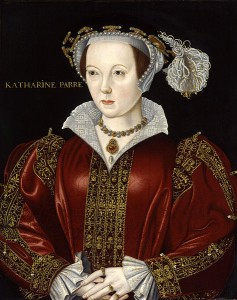 Born around 1512 to a family of gentry status, Katherine was the oldest daughter of Sir Thomas Parr, a late fifteenth-century courtier and knight. Her mother was Maud Green, a close friend and lady in waiting to Henry VIII’s first wife, Katherine of Aragon. The Parrs were a substantial northern family, with Thomas Parr tracing his ancestry to Edward III. Parr was a well-respected man and enjoyed the patronage of the young Henry VIII, who in 1515 sent him to Newcastle to escort his sister, the Princess Margaret, on her month-long progress south to London. Reports suggest he was charming and gallant, with the princess finding him particularly desirable; he soon became a favourite at Henry’s court. Upon his death in 1517 he left portions of £400 (£140,000 in modern value) to his two daughters, with a considerable amount more remaining for his son William.
Born around 1512 to a family of gentry status, Katherine was the oldest daughter of Sir Thomas Parr, a late fifteenth-century courtier and knight. Her mother was Maud Green, a close friend and lady in waiting to Henry VIII’s first wife, Katherine of Aragon. The Parrs were a substantial northern family, with Thomas Parr tracing his ancestry to Edward III. Parr was a well-respected man and enjoyed the patronage of the young Henry VIII, who in 1515 sent him to Newcastle to escort his sister, the Princess Margaret, on her month-long progress south to London. Reports suggest he was charming and gallant, with the princess finding him particularly desirable; he soon became a favourite at Henry’s court. Upon his death in 1517 he left portions of £400 (£140,000 in modern value) to his two daughters, with a considerable amount more remaining for his son William.
Without the presence of a male figure in what was a patriarchal period, Maud was dealt the challenging duty of raising her children while maintaining a presence at court. Throughout these challenges, Maud was successful; she managed her estates and finances accordingly, oversaw her children’s education and arranged suitable unions for them befitting their status and marriageability.
Katherine Parr received a remarkable education for a woman of the early sixteenth century. Much like the household of Thomas More (known for his unusual belief in the equal education of men and women), the Parr children were taught together, until William’s departure in 1525. While Katherine may have been educated alongside her brother at Rye House in Hertfordshire, she would still have been aware of a woman’s place in scripture, as being fashioned from Adam’s rib and subordinate to male authority. Although her tutors and details from her education are sparse, her adult interests provide an impression of her primary education. She was fluent in several languages including French, and was a fervent believer in the ‘new learning’ of her adulthood, in which personal piety and the accessibility of the Bible without the interoperation of church figures were dominant. Not only were her intellectual abilities rare for a woman, but Katherine also developed other secular pursuits, in the form of outside activities; such as being a keen rider and hunter, coin collector, music lover and chess player.
Although from a financially comfortable family, Katherine would have been aware that she was not destined for a great, noble marriage. Her mother worked endlessly at court, her father had passed away and provided the family with no great posthumous wealth. However, Katherine’s mother did establish marriage negotiations for her daughter in the early 1520s. Initially, Maud expressed favour towards a union with the Scrope family, the heir of the Lord of Bolton. However this was a failed match and discussions did not proceed much further. Instead, Katherine’s first husband would be Edward Borough, son of the Baron of Gainsborough Hall in Lincolnshire, a family of knighted gentry; a fitting match for Katherine. Not a great deal is documented regarding Katherine’s first marriage. However, historians have argued that it was unhappy and unprosperous. Her new home in Lincolnshire was isolated, the most distant county to be ruled directly from London at this period, and in stark contrast to her lifestyle at Rye House; a more cosmopolitan setting. Her father-in-law was overbearing, adding to the uncomfortable situation of the marriage. Sir Thomas Borough had been compelled to express his authority by taking precedence over the daily affairs of the household, but this soon ended with Maud Parr’s requests to Sir Thomas that the two newly weds be provided with their own private residence. For the remainder their marriage the couple lived together independent of Edward’s father at the Manor of Kirton in Lindsey, Lincolnshire, until the latter’s death in 1533.
Katherine was widowed at the age of roughly twenty-one, and although from a respected family, she needed to ensure a second marriage for her prosperity. Her first union had failed to produce an heir, and she would no longer enjoy the intervention of her strong-willed mother, due to her death in 1531, therefore in the summer of 1534, only a year after being widowed, Katherine married her second cousin, John Neville, third Baron Latimer. Latimer had been married twice previously and was advanced in age compared to his younger wife, an age difference of just over twenty years. The marriage was fitting; Katherine required financial security, and Lord Latimer’s two children from his former marriages required a female mothering presence. The newlyweds set up residence at Snape Castle, in Yorkshire, furthering Katherine’s distance from any potential life at court.
Although separated by a large age gap, their nine years of marriage seem to have been predominantly happy; Katherine adored her stepdaughter, Margaret. However, similar feelings did not resonate with Latimer’s son and heir, John, with whom Katherine often quarrelled. The Latimers’ lives took an unfortunate turn in 1536 during the infamous revolt known as the ‘Pilgrimage of Grace.’ Latimer was somewhat involved in the revolt, how much is debatable. Whether he was forced into the situation by the rebels, or whether his involvement was due to his own personal conservative zeal, cannot be substantiated. It was rumoured during the period that he was captured by the rebels and forced to join their efforts to reinstate England with Rome, and to express their other more economical based grievances. Katherine was isolated, but remained vigilant over her stepchildren while Latimer was essentially under the control of the rebels. Latimer later negotiated with the rebels and was able to eventually return to his family and ensure any dissenters against the king were removed from his property. However, his reputation was heavily taxed after his involvement with the pilgrimage.
Thankfully for Latimer and his family, no charges were laid against him. However, after the death of Henry’s first minister, Thomas Cromwell, they revived some of their former prestige. Katherine even took trips to court to visit her sister Anne, and brother William, the latter crafting a budding career at court. The Latimer family lived primarily in the south following the pilgrimage, living in London in 1542 so Latimer could attend parliament - a clear example of his revival to favour. By the end of 1542, he was clearly ill. Katherine was a diligent wife in caring for him during this final illness, with his death quickly following in 1543. Although a wealthy widow following her second husband's death, Katherine would likely have had to return to her northern estates, far from the glittering and cosmopolitan court of London. With this in mind, she managed to form a friendship with the Princess Mary Tudor, the daughter of Katherine of Aragon, her late mother’s employer and trusted confident. By February of 1543, Katherine was established in Mary’s household. She would quickly go on to catch the eye of the king, although she was besotted with the charismatic and charming Thomas Seymour, brother to the late former queen, Jane Seymour. However, these plans of a chivalric romance between the two were soon shattered when Henry VIII sent Thomas on business to Brussels, leaving Katherine to be courted by an ageing and temperamental monarch.
Katherine and Henry VIII married on 12th July 1543 at Hampton Court Palace in the queen’s closet (which still exists to this day). The marriage was initially successful. Katherine created a caring environment and was involved in the upbringing of the king’s children. Prince Edward wrote to the queen frequently regarding his educational process, an important factor in Katherine’s relationship with the king’s children, wishing for his children to emulate her own humanist education. In fact, the queen was the first woman to have her own work published in English. Pieces such as Lamentation of a Sinner (published 1547 after the king’s death), sponsored by her close reformed friends the Duchess of Suffolk and Marquess of Northampton, reveal a passionate and pious woman. Other such influential and religious works include Psalms or Prayers and Prayers or Medication, 1544 and 1545 respectively. Although academically competent, Katherine became an advocate of artistic patronage. Becoming Henry’s most painted queen, Katherine commissioned full-length portraits of her three step-children; Katherine was aware of the secular medium she was working with, showing the image of royalty and magnificence on a much larger scale than ever before. Iconography was not her only means of propelling the advances of her step-children, she influenced the king to ensure they were restored to the succession, as any future heirs following the current union seemed doubtful and unrealistic.
Contemporaries were initially kind towards the union. Thomas Wriothesley, the king’s secretary, wrote to the Duke of Norfolk that Katherine was a ‘woman, in my judgement, for virtue, wisdom and gentleness most meet for his highness, and I am sure his majesty never had a wife more agreeable.’ Equally admiring was the English ambassador to Venice, who wrote flatteringly about the queen’s beauty. The king showered her with titles, jewels and dowager lands. However, his ailing health resulted in moments of anger and incredible generosity, essentially becoming unpredictable and lacking in continuity during the later years of his reign. A clear example of his irresponsible personality would be the involvement of England in France in 1545, an unnecessary venture to claim back his glory days of the 1510s and, perhaps, his youth. Katherine was astute and politically able. Like Katherine of Aragon in 1513, Katherine Parr was made ‘regent and governess of the kingdom’ in the king’s absence. She was keen to surround herself with the royal children, bringing Princess Elizabeth back to court from Hertfordshire, and from July until September kept all three royal children at court and ruled in the king’s name. This was an unusual gesture; at a young age, royal children were provided with their own household and staff, away from the temptations of court and were educated within their households. Royal children would only come together for celebratory events, but Katherine wished them to be together during the king’s absence - perhaps this gave her the opportunity to bond with them on a more informal basis.
Katherine was successful during her time as regent and signed five royal proclamations, however, the rule of a female, particularly one who’d previously been a Yorkshire housewife, earned her a lot of enemies, especially from the conservative faction. Men such as Stephen Gardner, Thomas Wriothesley and William Paget, who had initially admired the queen, soon became dissatisfied with her influence over the king and their spiritual matters, which they suspected, on behalf of Katherine, echoed a further reformed church of England.
Katherine is known for her reformed views and religious ideology. Henry’s reformation, a decade earlier, had divided the country; however, he still practised traditional Catholic practices, such as the holy mass, and believed in transubstantiation and clerical celibacy, established under the six articles of 1539. Conservatives at court were sceptical of the goings-on in Katherine’s private chambers with her ladies, who equally shared her reformed views and held discussions on the newly printed English Bible. Historians have even suggested that the king himself was becoming discontented with her outspoken views on religious policy. The conservative faction could not openly accuse the queen, as this would pose far too great a risk of backfiring; instead, they wished to seek an answer from the interrogation and torture of a female radicalised preacher, Anne Askew. Unfortunately for Gardner and Wriothesley, Askew failed to confess to working with any accomplices or with Katherine. Gardener continued searching for evidence that Katherine was a heretic, and working against the king.
1546 started out positive for Katherine, and she had no immediate reasons to doubt the king’s affection; his new New Year’s gift of £66 (about £20,000) emulated his previous generosity towards her. Regardless, the conservatives had managed in the summer of 1546 to issue a warrant of arrest for the queen. Sources differ, but Katherine managed to discover that she was in a vulnerable situation and took to her bedchamber claiming she was ill. The king rushed to her bedside, and she affirmed that she was the king’s diligent servant in all that she did, and always worked for the honour and service of the king. These soothing words of submission fed Henry’s authoritative self-perception of himself, and he swiftly cancelled the warrant for arrest, after reprimanding Katherine for her outspokenness, which may have reminded the king of his second wife, Anne Boleyn.
Henry died the following year, leaving Katherine widowed for the fourth time. Previously, as mentioned, Katherine was besotted with the dashing Thomas Seymour, and within weeks took him as her lover and married him in secret without the consent of the royal council, which was now governing the country during King Edward’s minority. Historians have argued that it was foolish for Katherine to marry, especially to a man not befitting a dowager queen and without consulting the king’s council. This essentially alienated her from her stepson, the king, and caused scandalous gossip at court. Throughout the difficulties, Katherine was still able to secure the guardianship of the young Princess Elizabeth and Lady Jane Grey. The marriage was unsuitable; a love match, and it can be argued that Seymour took advantage of the union. He wished to maintain the size of his estate, acquire the wardship of the two girls and he attempted to establish himself against his superior brother who already had numerous children. Rumours began to emerge that Elizabeth and Seymour were engaged in a love affair. However, this is something that Elizabeth later vehemently denied this under interrogation. By this time, Katherine was pregnant and Elizabeth was soon banished. The dowager queen travelled to her confinement at Sudeley Castle in Gloucestershire in 1548. On 30th August, she gave birth to a daughter, who was baptised Mary. Sadly, Katherine quickly became ill. She had developed the common puerperal fever, an imminent death sentence in most cases during this period. The dowager queen Katherine Parr died on 5th September 1548, just six days after the birth of her daughter.
Often misrepresented in popular culture as Henry’s ‘nurse-maid’, Katherine was instead a remarkable and able woman. Far-reaching in her personal and outspoken beliefs on religious policy, Katherine was also very able in terms of political manoeuvring, an example being her time as regent. Her patronage extended towards the arts, fashion and architecture. She enabled the succession of her stepdaughters through personal intervention and passion, with historians suggesting that her queenship paved the way for the future queens regnant, Mary I and Elizabeth I. Overall, Katherine’s presence - secular, personal and political - was important during the final years of Henry’s reign and is singularly important to discuss.
, Katherine was the oldest daughter of Sir Thomas Parr, a late fifteenth-century courtier and knight. Her mother was Maud Green, a close friend and lady in waiting to Henry VIII’s first wife, Katherine of Aragon. The Parrs were a substantial northern family, with Thomas Parr tracing his ancestry to Edward III. Parr was a well-respected man and enjoyed the patronage of the young Henry VIII, who in 1515 sent him to Newcastle to escort his sister, the Princess Margaret, on her month-long progress south to London. Reports suggest he was charming and gallant, with the princess finding him particularly desirable; he soon became a favourite at Henry’s court. Upon his death in 1517 he left portions of £400 (£140,000 in modern value) to his two daughters, with a considerable amount more remaining for his son William.
Without the presence of a male figure in what was a patriarchal period, Maud was dealt the challenging duty of raising her children while maintaining a presence at court. Throughout these challenges, Maud was successful; she managed her estates and finances accordingly, oversaw her children’s education and arranged suitable unions for them befitting their status and marriageability.
Katherine Parr received a remarkable education for a woman of the early sixteenth century. Much like the household of Thomas More (known for his unusual belief in the equal education of men and women), the Parr children were taught together, until William’s departure in 1525. While Katherine may have been educated alongside her brother at Rye House in Hertfordshire, she would still have been aware of a woman’s place in scripture, as being fashioned from Adam’s rib and subordinate to male authority. Although her tutors and details from her education are sparse, her adult interests provide an impression of her primary education. She was fluent in several languages including French, and was a fervent believer in the ‘new learning’ of her adulthood, in which personal piety and the accessibility of the Bible without the interoperation of church figures were dominant. Not only were her intellectual abilities rare for a woman, but Katherine also developed other secular pursuits, in the form of outside activities; such as being a keen rider and hunter, coin collector, music lover and chess player.
Although from a financially comfortable family, Katherine would have been aware that she was not destined for a great, noble marriage. Her mother worked endlessly at court, her father had passed away and provided the family with no great posthumous wealth. However, Katherine’s mother did establish marriage negotiations for her daughter in the early 1520s. Initially, Maud expressed favour towards a union with the Scrope family, the heir of the Lord of Bolton. However this was a failed match and discussions did not proceed much further. Instead, Katherine’s first husband would be Edward Borough, son of the Baron of Gainsborough Hall in Lincolnshire, a family of knighted gentry; a fitting match for Katherine. Not a great deal is documented regarding Katherine’s first marriage. However, historians have argued that it was unhappy and unprosperous. Her new home in Lincolnshire was isolated, the most distant county to be ruled directly from London at this period, and in stark contrast to her lifestyle at Rye House; a more cosmopolitan setting. Her father-in-law was overbearing, adding to the uncomfortable situation of the marriage. Sir Thomas Borough had been compelled to express his authority by taking precedence over the daily affairs of the household, but this soon ended with Maud Parr’s requests to Sir Thomas that the two newly weds be provided with their own private residence. For the remainder their marriage the couple lived together independent of Edward’s father at the Manor of Kirton in Lindsey, Lincolnshire, until the latter’s death in 1533.
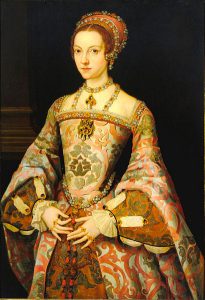 Katherine was widowed at the age of roughly twenty-one, and although from a respected family, she needed to ensure a second marriage for her prosperity. Her first union had failed to produce an heir, and she would no longer enjoy the intervention of her strong-willed mother, due to her death in 1531, therefore in the summer of 1534, only a year after being widowed, Katherine married her second cousin, John Neville, third Baron Latimer. Latimer had been married twice previously and was advanced in age compared to his younger wife, an age difference of just over twenty years. The marriage was fitting; Katherine required financial security, and Lord Latimer’s two children from his former marriages required a female mothering presence. The newlyweds set up residence at Snape Castle, in Yorkshire, furthering Katherine’s distance from any potential life at court.
Katherine was widowed at the age of roughly twenty-one, and although from a respected family, she needed to ensure a second marriage for her prosperity. Her first union had failed to produce an heir, and she would no longer enjoy the intervention of her strong-willed mother, due to her death in 1531, therefore in the summer of 1534, only a year after being widowed, Katherine married her second cousin, John Neville, third Baron Latimer. Latimer had been married twice previously and was advanced in age compared to his younger wife, an age difference of just over twenty years. The marriage was fitting; Katherine required financial security, and Lord Latimer’s two children from his former marriages required a female mothering presence. The newlyweds set up residence at Snape Castle, in Yorkshire, furthering Katherine’s distance from any potential life at court.
Although separated by a large age gap, their nine years of marriage seem to have been predominantly happy; Katherine adored her stepdaughter, Margaret. However, similar feelings did not resonate with Latimer’s son and heir, John, with whom Katherine often quarrelled. The Latimers’ lives took an unfortunate turn in 1536 during the infamous revolt known as the ‘Pilgrimage of Grace.’ Latimer was somewhat involved in the revolt, how much is debatable. Whether he was forced into the situation by the rebels, or whether his involvement was due to his own personal conservative zeal, cannot be substantiated. It was rumoured during the period that he was captured by the rebels and forced to join their efforts to reinstate England with Rome, and to express their other more economical based grievances. Katherine was isolated, but remained vigilant over her stepchildren while Latimer was essentially under the control of the rebels. Latimer later negotiated with the rebels and was able to eventually return to his family and ensure any dissenters against the king were removed from his property. However, his reputation was heavily taxed after his involvement with the pilgrimage.
Thankfully for Latimer and his family, no charges were laid against him. However, after the death of Henry’s first minister, Thomas Cromwell, they revived some of their former prestige. Katherine even took trips to court to visit her sister Anne, and brother William, the latter crafting a budding career at court. The Latimer family lived primarily in the south following the pilgrimage, living in London in 1542 so Latimer could attend parliament - a clear example of his revival to favour. By the end of 1542, he was clearly ill. Katherine was a diligent wife in caring for him during this final illness, with his death quickly following in 1543. Although a wealthy widow following her second husband's death, Katherine would likely have had to return to her northern estates, far from the glittering and cosmopolitan court of London. With this in mind, she managed to form a friendship with the Princess Mary Tudor, the daughter of Katherine of Aragon, her late mother’s employer and trusted confident. By February of 1543, Katherine was established in Mary’s household. She would quickly go on to catch the eye of the king, although she was besotted with the charismatic and charming Thomas Seymour, brother to the late former queen, Jane Seymour. However, these plans of a chivalric romance between the two were soon shattered when Henry VIII sent Thomas on business to Brussels, leaving Katherine to be courted by an ageing and temperamental monarch.
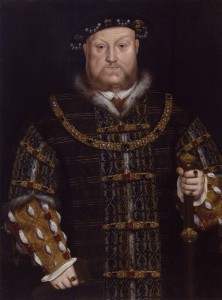 Katherine and Henry VIII married on 12th July 1543 at Hampton Court Palace in the queen’s closet (which still exists to this day). The marriage was initially successful. Katherine created a caring environment and was involved in the upbringing of the king’s children. Prince Edward wrote to the queen frequently regarding his educational process, an important factor in Katherine’s relationship with the king’s children, wishing for his children to emulate her own humanist education. In fact, the queen was the first woman to have her own work published in English. Pieces such as Lamentation of a Sinner (published 1547 after the king’s death), sponsored by her close reformed friends the Duchess of Suffolk and Marquess of Northampton, reveal a passionate and pious woman. Other such influential and religious works include Psalms or Prayers and Prayers or Medication, 1544 and 1545 respectively. Although academically competent, Katherine became an advocate of artistic patronage. Becoming Henry’s most painted queen, Katherine commissioned full-length portraits of her three step-children; Katherine was aware of the secular medium she was working with, showing the image of royalty and magnificence on a much larger scale than ever before. Iconography was not her only means of propelling the advances of her step-children, she influenced the king to ensure they were restored to the succession, as any future heirs following the current union seemed doubtful and unrealistic.
Katherine and Henry VIII married on 12th July 1543 at Hampton Court Palace in the queen’s closet (which still exists to this day). The marriage was initially successful. Katherine created a caring environment and was involved in the upbringing of the king’s children. Prince Edward wrote to the queen frequently regarding his educational process, an important factor in Katherine’s relationship with the king’s children, wishing for his children to emulate her own humanist education. In fact, the queen was the first woman to have her own work published in English. Pieces such as Lamentation of a Sinner (published 1547 after the king’s death), sponsored by her close reformed friends the Duchess of Suffolk and Marquess of Northampton, reveal a passionate and pious woman. Other such influential and religious works include Psalms or Prayers and Prayers or Medication, 1544 and 1545 respectively. Although academically competent, Katherine became an advocate of artistic patronage. Becoming Henry’s most painted queen, Katherine commissioned full-length portraits of her three step-children; Katherine was aware of the secular medium she was working with, showing the image of royalty and magnificence on a much larger scale than ever before. Iconography was not her only means of propelling the advances of her step-children, she influenced the king to ensure they were restored to the succession, as any future heirs following the current union seemed doubtful and unrealistic.
Contemporaries were initially kind towards the union. Thomas Wriothesley, the king’s secretary, wrote to the Duke of Norfolk that Katherine was a ‘woman, in my judgement, for virtue, wisdom and gentleness most meet for his highness, and I am sure his majesty never had a wife more agreeable.’ Equally admiring was the English ambassador to Venice, who wrote flatteringly about the queen’s beauty. The king showered her with titles, jewels and dowager lands. However, his ailing health resulted in moments of anger and incredible generosity, essentially becoming unpredictable and lacking in continuity during the later years of his reign. A clear example of his irresponsible personality would be the involvement of England in France in 1545, an unnecessary venture to claim back his glory days of the 1510s and, perhaps, his youth. Katherine was astute and politically able. Like Katherine of Aragon in 1513, Katherine Parr was made ‘regent and governess of the kingdom’ in the king’s absence. She was keen to surround herself with the royal children, bringing Princess Elizabeth back to court from Hertfordshire, and from July until September kept all three royal children at court and ruled in the king’s name. This was an unusual gesture; at a young age, royal children were provided with their own household and staff, away from the temptations of court and were educated within their households. Royal children would only come together for celebratory events, but Katherine wished them to be together during the king’s absence - perhaps this gave her the opportunity to bond with them on a more informal basis.
Katherine was successful during her time as regent and signed five royal proclamations, however, the rule of a female, particularly one who’d previously been a Yorkshire housewife, earned her a lot of enemies, especially from the conservative faction. Men such as Stephen Gardner, Thomas Wriothesley and William Paget, who had initially admired the queen, soon became dissatisfied with her influence over the king and their spiritual matters, which they suspected, on behalf of Katherine, echoed a further reformed church of England.
Katherine is known for her reformed views and religious ideology. Henry’s reformation, a decade earlier, had divided the country; however, he still practised traditional Catholic practices, such as the holy mass, and believed in transubstantiation and clerical celibacy, established under the six articles of 1539. Conservatives at court were sceptical of the goings-on in Katherine’s private chambers with her ladies, who equally shared her reformed views and held discussions on the newly printed English Bible. Historians have even suggested that the king himself was becoming discontented with her outspoken views on religious policy. The conservative faction could not openly accuse the queen, as this would pose far too great a risk of backfiring; instead, they wished to seek an answer from the interrogation and torture of a female radicalised preacher, Anne Askew. Unfortunately for Gardner and Wriothesley, Askew failed to confess to working with any accomplices or with Katherine. Gardener continued searching for evidence that Katherine was a heretic, and working against the king.
1546 started out positive for Katherine, and she had no immediate reasons to doubt the king’s affection; his new New Year’s gift of £66 (about £20,000) emulated his previous generosity towards her. Regardless, the conservatives had managed in the summer of 1546 to issue a warrant of arrest for the queen. Sources differ, but Katherine managed to discover that she was in a vulnerable situation and took to her bedchamber claiming she was ill. The king rushed to her bedside, and she affirmed that she was the king’s diligent servant in all that she did, and always worked for the honour and service of the king. These soothing words of submission fed Henry’s authoritative self-perception of himself, and he swiftly cancelled the warrant for arrest, after reprimanding Katherine for her outspokenness, which may have reminded the king of his second wife, Anne Boleyn.
Henry died the following year, leaving Katherine widowed for the fourth time. Previously, as mentioned, Katherine was besotted with the dashing Thomas Seymour, and within weeks took him as her lover and married him in secret without the consent of the royal council, which was now governing the country during King Edward’s minority. Historians have argued that it was foolish for Katherine to marry, especially to a man not befitting a dowager queen and without consulting the king’s council. This essentially alienated her from her stepson, the king, and caused scandalous gossip at court. Throughout the difficulties, Katherine was still able to secure the guardianship of the young Princess Elizabeth and Lady Jane Grey. The marriage was unsuitable; a love match, and it can be argued that Seymour took advantage of the union. He wished to maintain the size of his estate, acquire the wardship of the two girls and he attempted to establish himself against his superior brother who already had numerous children. Rumours began to emerge that Elizabeth and Seymour were engaged in a love affair. However, this is something that Elizabeth later vehemently denied this under interrogation. By this time, Katherine was pregnant and Elizabeth was soon banished. The dowager queen travelled to her confinement at Sudeley Castle in Gloucestershire in 1548. On 30th August, she gave birth to a daughter, who was baptised Mary. Sadly, Katherine quickly became ill. She had developed the common puerperal fever, an imminent death sentence in most cases during this period. The dowager queen Katherine Parr died on 5th September 1548, just six days after the birth of her daughter.
Often misrepresented in popular culture as Henry’s ‘nurse-maid’, Katherine was instead a remarkable and able woman. Far-reaching in her personal and outspoken beliefs on religious policy, Katherine was also very able in terms of political manoeuvring, an example being her time as regent. Her patronage extended towards the arts, fashion and architecture. She enabled the succession of her stepdaughters through personal intervention and passion, with historians suggesting that her queenship paved the way for the future queens regnant, Mary I and Elizabeth I. Overall, Katherine’s presence - secular, personal and political - was important during the final years of Henry’s reign and is singularly important to discuss.
Written by our regular writer, Alexander Taylor.
More on Katherine Parr:


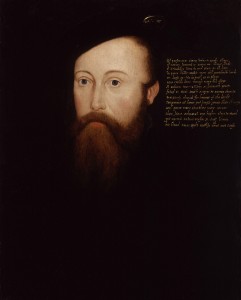
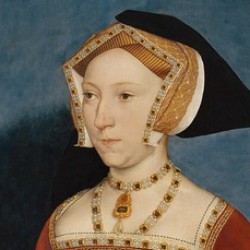
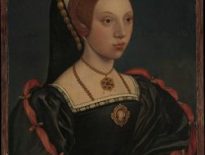
Her regency while Henry was at war would be an interesting topic and something I might look into during my history course.